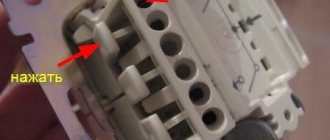We can safely say that every person, to one degree or another, has experienced an electric discharge. Not only an electrical appliance, but also a person can receive an electric shock. Bioelectric impulses appear when life begins and disappear with the onset of death. Let's consider how contact with electricity affects a person and how to avoid it.
Reasons why electric shock occurs
There are people who are often shocked by everything. What is the reason for this phenomenon is sometimes completely unclear. Obviously, an electric shock can be obtained by touching an object under voltage above 36 V. In this case, a short circuit occurs through the body, resulting in an electric shock. But a person receives a release from things that are far from tension.
The reason why everything gets electric is static electricity. It occurs when charges accumulate on the surface of physical bodies that do not conduct electricity well. They persist for some time, then a discharge occurs, causing discomfort.
Electrostatic charges arise as a result of friction, so they accumulate faster in winter, when the air becomes drier and a person wears wool, fur and synthetic clothing.
Tips for those who regularly receive electric shocks
For those who are already tired of electric shocks, there are a couple more practical tips:
Reduce discomfort.
To minimize shock pain, touch the metal object to parts of your body that are less sensitive. These are the elbows and knuckles.
While the vehicle is being refueled, all passengers must leave the vehicle. Otherwise, there is a high risk of static discharge and sparks. And it is already capable of causing a fire.
Materials that ignite quickly should be stored in a safe place.
Conditioner for removing electricity from the carpet.
After spraying the carpet, let it dry completely. Otherwise, the expected effect will not occur.
How to quickly remove static electricity from clothes:
The real story of why a person gets electrocuted
My friend has a “gift” - she can give an electric shock. No jokes, in all seriousness. As soon as she touches the interlocutor, an electric discharge shocks him with all his might. This amuses us and makes us happy. But she’s already pretty tired of this. The situation gets worse with the arrival of autumn, when the central heating turns on.
She recently told me this story: her husband comes home from work, she opens the door for him, kisses him, and they both get an electric shock! Both twitched and laughed. After a couple of minutes, the husband says that he has a headache and asks her to touch his forehead. She touches her forehead and everything repeats. The friend rushes to the bathroom in a panic, puts her hands under the stream of water and, as they say, hits her worse than before! She is in despair, does not understand what to do about it. Fabric softeners, antistatic sprays and other tips do not help. By the way, everything is in order with the wiring; she and her husband checked the apartment in detail for electrification. Maybe this is not connected with electricity, but with esotericism?! Who knows…
I think the question is: “Why does a person get electrocuted?” interested everyone at least once. If you are tired of being an electrical charge accumulator, use these tips!
We can safely say that every person, to one degree or another, has experienced an electric discharge. Not only an electrical appliance, but also a person can receive an electric shock. Bioelectric impulses appear when life begins and disappear with the onset of death. Let's consider how contact with electricity affects a person and how to avoid it.
Why does a person get electrocuted?
We can say that a person is a kind of electrical system, so he receives an electric shock when there is a large accumulation of electrical charges. This happens for two reasons:
- The body, like a mini-power plant, produces its own electrical currents . They are not felt by humans, and can only be measured with ultra-sensitive instruments. Part of the biocurrents is used to maintain the vital functions of the body, and the excess is converted into static energy.
- Input of static electricity from outside . An electric charge, positive or negative, can accumulate on the surface of any substance (the so-called triboelectric effect). Electrification occurs when objects are heated or cooled, irradiated by energy sources, when a frictional force acts on them. Synthetics, fur, wool, and hair are especially strongly electrified (but cotton fabrics, wood, and glass are not “charged”).
The human body is well electrified. This is facilitated by the lack of grounding, wearing clothes and the fact that his skin is covered with hairs. When a person touches an "uncharged" person with a hand or other part of the body, a discharge occurs, which is manifested by a crackling or tingling sensation. Often bioelectricity of great power hits its owner painfully: he gets an electric shock from everything he touches.
How to neutralize static electricity quickly: step-by-step instructions
| Steps | Meaning |
| Step #1: Use a pin. | Simply attach a pin to the seam of your pants or to the collar of your shirt. All electrical charges will be concentrated on the metal of the pin. |
| Step #2: Use metal hangers. | To quickly remove the charge from clothing, touch it with a metal hanger. They will immediately collect all the charge on themselves. |
| Step #3: Carry something metal in your pocket. | If you are the “lucky one” who gets electrocuted on a regular basis, put a coin or metal keychain in your pocket. Touch this thing from time to time, it will “ground” you. |
Why doesn't every person get an electric shock?
Each person accumulates a different amount of electrostatic charges because they have individual resistance and electrical capacity (the ability to accumulate electricity). There is a theory according to which the amount of biocurrents produced also depends on the psycho-emotional state.
High static voltage in humans is a phenomenon that scientists still cannot solve. Such people (there are not many of them, they have lived at all times) can withstand mains voltage of 220 V and higher, so they calmly pick up wires with their bare hands. Their body can be used as a conductor to light a light bulb, but touching a carrier of extreme bioelectricity is dangerous.
Why is the washing machine electrocuted, the main reasons
Lack of grounding
The main reason why electricity flows through the body of the washing machine is the lack of well-equipped grounding. Current leaks into the housing occur even with new household devices. Most often, this problem is faced by residents of high-rise buildings and Soviet-era buildings, in which the installation of grounding was not a prerequisite. It must be admitted that modern developers often avoid this issue, without burdening themselves with unnecessary expenses such as grounding equipment in a residential building.
Network interference filter
Almost all washing machines use so-called surge protectors (SFP), which are designed to protect the electronics of the washing unit from voltage surges. Due to the capacitors installed in them, the voltage during sudden surges is smoothed out.
This filter is located inside the washing machine and is attached to the unit body through a grounding wire, therefore, when voltage passes through this device, a small current will flow to the unit body due to the lack of grounding in the electrical network. The fact is that manufacturers assemble units, taking into account that users will have grounding in the network, which is very rare in Russia.
To avoid voltage on the housing, you need to disconnect and isolate the middle output (terminal) of the surge protector capacitor from the machine body, without disconnecting the ground wire from the unit body. In this simple way you can get rid of unpleasant electric shocks once and for all.
Wiring damage
The second cause of current leakage may be a malfunction of the electrical part of the washing unit. Damage to wires and contacts or “breakdown” of the heating element (heating element), which almost all washing machines are equipped with, can not only lead to failure of the entire electronic part of the unit, but also pose a serious threat to human life.
High humidity
The third reason for a breakdown on the housing is the operation of the washing unit in conditions of high humidity. Usually, when installing a washing machine in a bathroom, steam condenses on various parts. Water is an excellent conductor, and not only the body of the machine, but also the water supply and sewage systems can give an electric shock. In short, everything that comes into contact with the conductor, that is, water. In this case, even unsuspecting neighbors are exposed to the threat of electric shock.
Why does water beat with electric current?
Water is a conductor of electricity, so if electrical wiring and plumbing cross paths, you may feel an electric shock when washing your hands from the tap. The reason for this phenomenon may be the following:
- lack of proper grounding in the apartment;
- damaged insulation of bathroom electrical wiring;
- damage to the apartment's electrical network;
- installation of sockets, switches, lamps not intended for use in damp areas;
- use of water pipes for grounding;
- breakdown of the heating element in the boiler, water heater, washing machine;
- an ungrounded electric stove or dishwasher located in the kitchen near the sink.
The problem can be caused by neighbors who connect the neutral wire to the water pipe, stealing electricity. You can check this by turning off the power to your apartment: if the water is electric, then the cause is from outside.
How to determine the cause and why the zero does not give an electric shock
If headphones or a gas pipe are electrocuted in the house, then you need to diagnose this problem. Likewise, if current starts flowing during welding, it means there are exposed wires somewhere. Initially, in order to eliminate the cause, it must be discovered.
It is much better to entrust such a process to professionals who have:
- Knowledge in this area;
- Work experience;
- A necessary tool.
For a specialist of the highest category, it will not be difficult to identify moments in the form of theft of electricity, which is often carried out by neighbors, as well as breakdowns in wires. Such a sensitive situation is detected using a special highly sensitive device, which is owned by special companies.
Diagnostics is needed in any case, regardless of which particular object in the house is experiencing electric shock, for example, a bathroom, boiler, etc.
As a rule, it includes a number of activities. The presence and correct grounding of all electrical appliances in the house is checked. External damage to the wires is detected, for which it is enough to disconnect the devices from the network and simply identify the problem area. After proper diagnosis, it should become clear why it is impossible to use the faucet in the bathtub due to constant electric shocks.
How to remove static electricity
In everyday life, static electricity creates many unpleasant moments, so let’s look at a few recommendations that will tell you what to do to remove the increased charge:
- Wear underwear made of cotton fabrics.
- Add conditioner to rinse clothes after washing.
- Use special products (“antistatic agents”) for clothes made of synthetics, silk, wool and carpets.
- Do not use plastic, but wooden or metal combs.
- Attach a metal pin to the garment from the inside out.
- Walk barefoot on a wooden floor, or on the ground in summer.
- Wear antistatic wrist straps when working with electrical appliances.
One of the ways that effectively removes static electricity is humidification. The static charge caused by contact with synthetic clothing will decrease by 1.5 times if the air is humidified from 40 to 60%. For this purpose, special devices are used and the room is ventilated more often. A good effect is achieved by laying a damp towel on the radiators.
To remove static electricity from the car body, antistatic belts in contact with the road are used, and in modern cars special devices are built in for this purpose. The apartment uses a special potential equalization system, which is combined with the ground loop. To quickly remove an electrostatic charge from yourself, you need to touch any grounded metal with a metal object.
It is impossible to avoid contact with electrical charges; they surround a person everywhere and are inside him. Biocurrents, small in power, do not cause harm to life and health. But regular exposure to them can cause malfunctions in the body and lead to death. Therefore, you need to regularly get rid of static electricity.
Why is it dangerous when a surface is electrocuted?
In industry, electrostatic charge poses the greatest danger. Why in industry? There is a higher risk of unexpected ignition of flammable materials, which occurs upon contact with grounded equipment. In production, the charge can accumulate strongly; its energy is sufficient to ignite gas vapors and injure people.
Static electricity affects the operation of precision and ultra-precision instruments. There is a malfunction in the operation of radio communications and various automation equipment. Static discharge produces high voltage values, which is why many devices fail - they are not designed for such indicators.
How do static charges appear?
Wearing cotton clothes or using items made of natural wood does not accumulate electrical charges. On the contrary, contact with wool, leather or plastic products multiplies the negative and positive potential. If you put wool socks on your feet in winter and walk on linoleum or carpet, a high-voltage charge of static current appears on your body.
Accumulation is caused by:
- Concrete slabs for building structures;
- Sudden heating/cooling of objects;
- Irradiation from electromagnetic power sources.
Increased voltage levels are often accompanied by small spark discharges, causing low performance, pinching, tingling of the skin, and limb cramps. In addition, electronic equipment is also sensitive to currents. Microcircuits and field-effect transistors are damaged.
The high-voltage charge accumulated on human clothing flows as a pulse through the total resistance of the body and the contact pad along the structure of the semiconductor elements. The currents, having reached the maximum value after 10 milliseconds, gradually decrease.
Such a pulse will not only damage electronic equipment, but will also create hidden damage that degrades output parameters. As a result, a misadjustment of the established circuit is revealed.
This feature of a person depends on his character.
Has it ever happened to you that you became “electrically unsafe” - when you touched others, an electric discharge appeared at your fingertips? Or when touching metal? I wonder why this happens? Is such excessive electrification harmful and why?
“The fact is that static electricity accumulates on clothes,” explains Boris Skachko, a naturopathic doctor. - Synthetic fabrics, electromagnetic fields, static electricity on household appliances - all this leads to the fact that a person accumulates a certain charge. If it touches another person who is not "charged", an electrical spark occurs. It is also not easy for an electrified person to open the door or wash his hands - a discharge occurs, and this process can be very painful. And now, in winter, we wear a lot of different clothes. When moving, the wool rubs against the synthetic, resulting in a current. The human body is a good conductor - the current condenses, collects, and at one point discharges. This can happen, by the way, not only when touching someone or something with your hands, but even when kissing or touching noses.
- But there are people who often get electric shocks, and there are those who almost never. What does this depend on?
- We must take into account that each person has different resistance and electrical capacity. In addition, the body itself produces electricity, because all life processes are based on the difference in electrical potentials on cell membranes. Electric current also transmits nerve impulses. When the cell's electrical potential is zero, it means death. In addition, cells have their own mini-generators that produce energy - mitochondria. That is, our body is a kind of mini-power plant, and in a closed system, unused energy accumulates in the form of static electricity. There is even a theory that the ability to produce more or less electricity depends on the character and temperament of a person. The more lively, energetic, and active it is, the more current it produces. Let's say that the most electrifying of the four types of temperament is choleric. There are also cases described when people who were engaged in spiritual practices spontaneously combusted from their own electricity.










